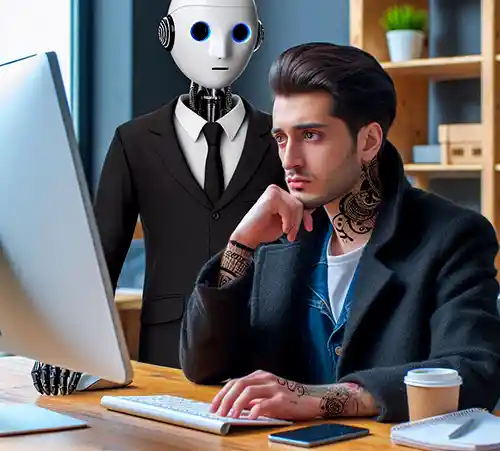- Home
- Tech
- FashionDiscover the latest trends, style tips, and fashion news from around the world. From runway highlights to everyday looks, explore everything you need to stay stylish and on-trend.
- About
- My Account
- Contact us
- Home
- Tech
- FashionDiscover the latest trends, style tips, and fashion news from around the world. From runway highlights to everyday looks, explore everything you need to stay stylish and on-trend.
- About
- My Account
- Contact us
Now Reading: Is AI Bad for Education? Pros and Cons of AI in Education
-
01
Is AI Bad for Education? Pros and Cons of AI in Education
- Home//
- Tech//
- Fashion//Discover the latest trends, style tips, and fashion news from around the world. From runway highlights to everyday looks, explore everything you need to stay stylish and on-trend.
- About//
- My Account//
- Contact us//

Everything around us in the world has both good and bad sides. We all know this. Artificial Intelligence, or AI, is no exception. Since the invention of AI, although it has brought many benefits to human life, some negative aspects have also been observed in society.
AI can be used in various fields, among which education is one of the most important. Let us explore how we can benefit from AI in the field of education, and at the same time, how AI is causing us difficulties in education.
We will first discuss the harmful aspects and then the positive sides. Let’s get started.
Disadvantages of artificial intelligence in education.
Over-Reliance on Technology Due to AI:

Before the emergence of AI, students used their own thinking to solve problems, and when they failed, they would seek help from their peers. Through conversations, discussions, or critiques among themselves, students were able to solve problems successfully. This gave them the opportunity to develop their skills and helped boost their confidence.
But nowadays, students are using AI for these tasks. As a result, AI is hindering the development of their problem-solving skills, thinking ability, judgment, and more. Their foresight is gradually shrinking. Over-dependence on this technology could become an obstacle to students’ intellectual development in the future.
There are certain AI tools that students can use to solve mathematical problems. For example, if a student takes a picture of a math problem and uploads it, AI can provide a step-by-step, well-explained solution. If students rely on AI instead of using their own intelligence to solve these problems, it will gradually reduce their ability to think critically, and their mathematical problem-solving skills will drastically deteriorate over time.
Risks to Students’ Data Security and Privacy Due to AI:
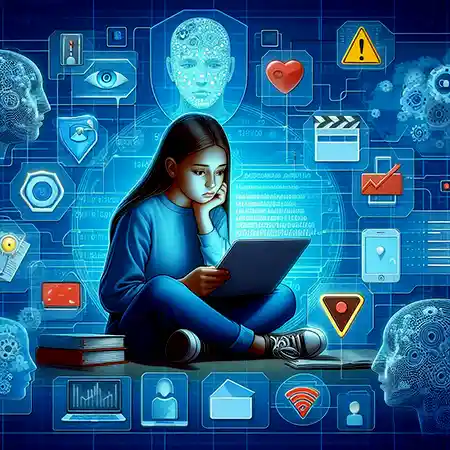
We all know that AI algorithms require a large amount of data for training. These data are necessary for AI systems to function effectively. As a result, in the field of education, it is natural that a large amount of student-related data is provided to train AI algorithms so that they can process the information and work efficiently. Among this data, there are also sensitive and confidential details about students. If this information is not stored securely, it becomes easy for unauthorized individuals to access it. This opens the door to the misuse of students’ data.
Moreover, data theft and exposure by hackers is nothing new in the world of technology. Therefore, there remains a risk that students’ personal information may be leaked in the future due to AI. In addition, there are ongoing concerns about whether the data provided to AI is being stored properly and securely, how safe the information truly is, and the likelihood of data breaches.
AI May Reduce Human Interaction with Students:

AI systems have now become highly advanced, making it possible for AI robots to teach students in the classroom instead of human teachers. Although these AI robots are quite capable of delivering education, they are not able to provide the care and affection that human teachers can. While teaching in the classroom, human teachers not only provide education but also offer students empathy, human touch, affection, and similar emotional support. These are things that AI robots cannot offer. This could hinder students’ emotional development. Their social skills may also decline. In this way, AI may increase the distance between students and human interaction.
AI robot-based Education May Be Less Engaging for Students:
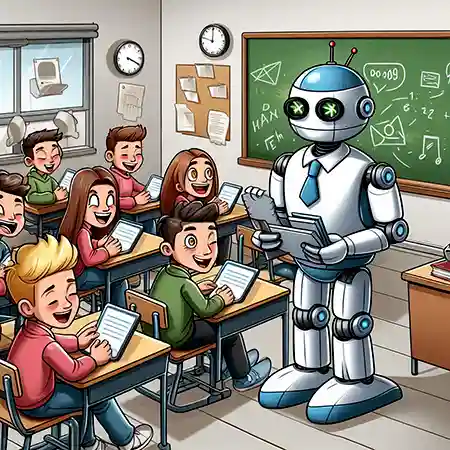
If classroom activities are conducted by AI robots, these robots are not capable of displaying expressions like human teachers. As a result, students may feel bored in the classroom. Lessons delivered by AI robots may be less engaging for students, and students may become less attentive during class. Even though AI robots may carry out their teaching responsibilities flawlessly, there is still a possibility that students may feel some irritation or dissatisfaction. This could lead to emotionally detached or impersonal education.
Discriminatory Education System Due to AI:
We all know that the quality of education is not the same everywhere in the world or in every educational institution. In some institutions, the quality of education is very high, while in others, it is not as advanced. Generally, it is observed that developed and wealthy countries have far better educational standards compared to underdeveloped and poorer countries. Moreover, while adopting new technologies is relatively easy for developing countries, for underdeveloped and poor nations, adopting such expensive technologies is nothing short of a nightmare. As a result, while students in advanced countries enjoy the benefits of a more sophisticated education system with the help of AI robots, it becomes impossible for poorer countries to implement these costly technologies in education. This leads to unequal learning experiences for students. In this way, AI can create inequality in the education system.
Biased Behavior of AI Toward Students:
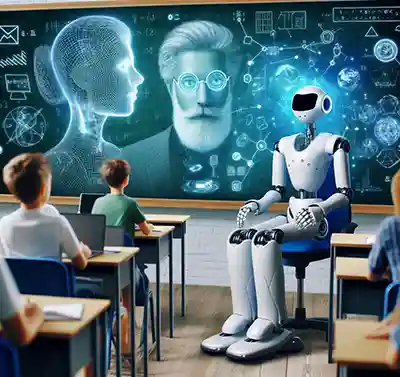
When training AI, it is very important to consider the quality of the data provided. Does the data show any signs of bias? Is the data completely neutral? Attention must be paid to these aspects.
The reason for this is that the data used to train AI systems, if biased, can cause the AI algorithms to behave in a biased manner once trained. If AI exhibits such discriminatory behavior toward students in the field of education, it could be concerning.
Another issue that has been observed is that AI algorithms are trained on data that causes them to exhibit bias toward the Western world. For example, there are some AIs that can recommend books based on students’ preferences. However, it has been seen that these AIs often recommend books by Western authors. This is because, during their training, the data provided to these AIs contained more information from the Western world. As a result, when a student uses such AI to look up information, in most cases the AI recommends Western news, books by Western authors, and similar content. Consequently, students using such AI tools may not learn much about Asian news, or books by Asian authors. Therefore, it can be said that AI is demonstrating biased behavior toward students.
AI May Show Adverse Reactions in Student Assessment:
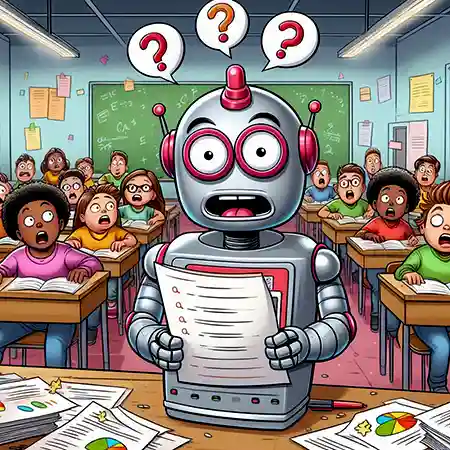
Just as the emergence of AI in the education system has improved the quality of education, over-reliance on AI could also lead to some problems in the future. Alongside AI, there is a constant need to keep human teachers actively involved in the education system. For example, if AI systems are used to evaluate students and any technical issue arises in the AI system, the student assessment process could be disrupted. This can directly impact the students’ academic lives.
Problems Created Due to Teachers’ Ignorance About AI:
Teachers need to be trained on how AI can assist students in their studies. If teachers lack sufficient knowledge about AI, they may perceive AI as a competitor. As a result, teachers might oppose the emergence of AI in the classroom. This could lead to a conflicting relationship between teachers and AI. Such a situation may disrupt a conducive learning environment in educational institutions.
Lack of Personalized Feedback in the Education System Due to AI:
We already know that AI algorithms are capable of teaching lessons in the education system instead of human teachers. However, not all students in the same class have the same understanding of the lesson. In this case, human teachers use different methods to help those students understand the lesson more easily. Although AI algorithms have advanced so much that they can understand a student’s mental state and provide education accordingly, many still believe that human teachers can understand students better than AI. If this is indeed the case, then it can be said that the AI education system lacks personalized feedback.
Job Loss in the Education System Due to AI:
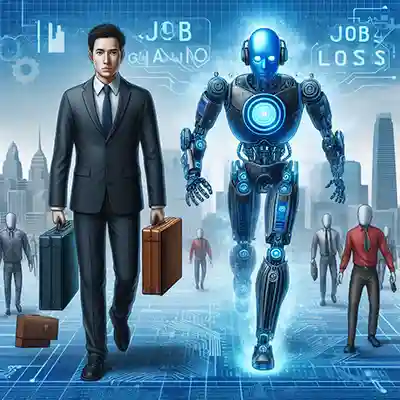
The emergence of AI in the education system has created the possibility of some teachers and staff losing their jobs. For example, with the introduction of AI in educational institutions, classes are now being taught by AI teachers instead of human teachers. This has led to a reduced need for human teachers compared to before. Additionally, AI can automatically handle tasks like grading quizzes.
Moreover, tasks related to accounting in educational institutions can now be easily performed by AI. As a result, individuals working in these roles are being easily replaced by AI.
There are also people working in educational institutions who used to answer various institutional queries. They provided these services through chat or voice calls. However, with the introduction of AI automation in these chat and voice call services, these tasks are now being completed quickly and efficiently by AI instead of humans. As a result, those employed in these roles are gradually losing their jobs.
Lack of Accountability in AI’s Actions:

AI algorithms analyze various types of data related to students and can provide suggestions on how to perform tasks in the best way for the future. Although the suggestions provided by AI often seem correct, in many cases, human beings question these decisions. It becomes difficult to understand the criteria AI algorithms consider when offering suggestions for the next steps. As a result, there is a lack of transparency and accountability in the actions performed by AI.
AI is Not Helping Physically Disabled Students:
We know that, alongside regular students, the number of physically disabled students is also significant. Among these physically disabled students are those with visual and hearing impairments. Since they cannot see or hear, it becomes difficult for them to use technology products in the same way as healthy students. As a result, they face difficulties when using AI technologies. In some cases, it becomes impossible to use them at all. Despite AI’s significant advancements over time, it still does not assist these vulnerable students in their education.
Academic Dishonesty of Students with the Help of AI:
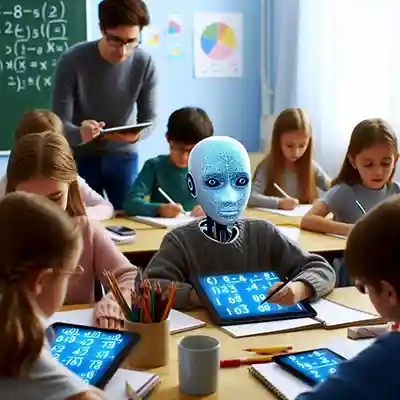
Students can use AI tools to deceive educational institutions without showcasing their own intellectual abilities. As a result, incorrect outcomes may arise in merit list selections. Less capable students may use AI to secure places in higher ranks, which could harm the interests of more capable students. Additionally, students have been using AI in various ways to cheat. This is causing significant concern among teachers. For example, students who use their own intellect to complete assignments are at a disadvantage compared to those using AI, as the latter gain unfair advantages. This is unacceptable and akin to wrongdoing against honest students.
Moreover, it has been revealed that in 2023, Titan Partners conducted a survey which clearly shows how students are ahead of teachers in using AI. The survey found that only 9% of instructors regularly use generative AI tools, whereas 27% of students use these same tools regularly. This means that students are three times more likely to use such tools compared to instructors.
The same study also found that almost half of the students have used AI tools at least once, while 71% of instructors have never used AI tools.
In other words, jokingly, students seem to be becoming more “smart” than their teachers in this regard. However, this should not be taken lightly. Teachers need to become more skilled in using AI because it will enhance the quality of their teaching. At the same time, students need to refrain from cheating in academic activities because it will only harm their future.
Surely, all these discussions about AI have made all of us feel a bit down. So, let’s talk about some of the positive aspects of AI in education to lift our spirits.
Convenient Education System for Students Due to AI:
AI robots can not only teach students but also monitor their learning experience. If a student is having difficulty understanding what they are learning, the robots can adjust their teaching methods. This allows students to learn in a way that suits their personal preferences. As a result, students can grasp their lessons quickly and easily, which helps them achieve better results.
Improvement of Personalized Education System Due to AI:
Those parents who can afford it, hire private tutors for their children. These tutors come to the students’ homes and help them with their studies. If students have difficulty understanding certain topics, the private tutor assists them in grasping those subjects. However, with the advancement of AI, it has now reached a point where it can adapt to a student’s learning style. Therefore, AI teachers can deliver lessons in such a way that students can understand the material quickly and easily. AI robots provide better guidance and support to enhance students’ learning and improve their educational progress.
Due to AI, teachers’ efficiency has increased:
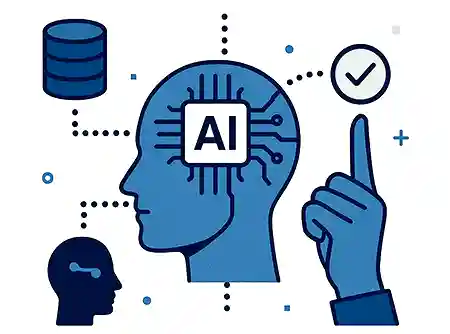
AI is currently being used in many tasks within educational institutions. As a result, the workload of teachers in these institutions has decreased. Consequently, teachers are getting more time to focus on students’ studies. Previously, teachers had to spend time not only on teaching but also on various administrative tasks, which are now being handled by AI. In addition, teachers no longer have to spend as much time preparing lesson plans, as AI can perform such tasks automatically. This is saving teachers a significant amount of time. They are using this saved time for teaching and other important tasks. In this way, with the help of AI, the chances of students achieving better results have increased significantly compared to before.
AI can help weak students in their studies:
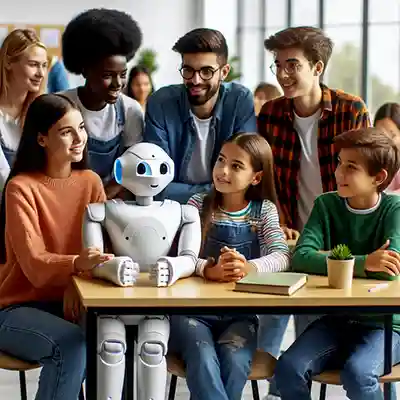
Nowadays, these AIs have become so advanced that they can easily identify the areas where students are weak during lessons. Later, the AI algorithms adjust the teaching methods according to the students’ pace. As a result, it becomes much easier for students to understand the lessons compared to before. Therefore, AI-based teaching methods have now become a strength for students.
AI-driven education systems are indeed attractive:
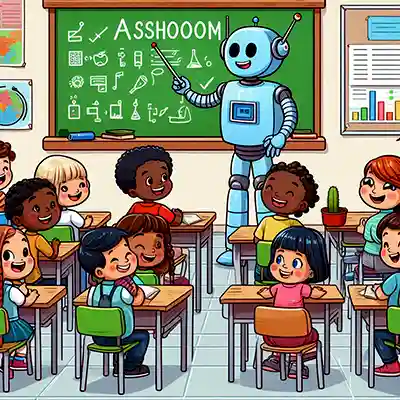
Although many people have placed greater importance on education systems led by human teachers compared to AI-driven education systems, it has often been observed that when students are taught using AI-powered tools, they enjoy the teaching methods of these tools more than those of human teachers. As a result, in many cases, students have been seen to become more attentive to their studies.
Due to the rapid advancement of AI, its influence has also touched the education system. Many believe that AI will be able to make even more significant contributions to improving the quality of education in the future. However, that does not mean there are no concerns surrounding AI in the education system.
Because of AI, interaction among students is decreasing. Socialization among students is declining, and social distance is increasing. Additionally, there is a possibility of bias being created by AI algorithms.
Since a lot of development in the education system is possible through AI, we should not view its activities negatively. Instead, we must work to reduce the problems that may arise from it. At the same time, we should focus all our efforts on using it in ways that bring us the most benefit.
There are many more articles about Artificial Intelligence on this blog TechRiven.Com You can search it here.
Will we benefit more from AI? Or is there a high possibility of many drawbacks? What do you think? Don’t forget to share your opinion.
Goodbye for today. Take care.
Related Posts
Stay Informed With the Latest & Most Important News
Previous Post
Next Post
Enter your email and click subscribe to not miss the latest and important news.
Recent Posts
- 21 Best Labor Day T-Shirt Deals on Amazon (Reviewed)
- Will AI Replace Accountants? No, AI Won’t Replace Accountants Yet. But Why? Let’s Get Some Clear Explanations.
- Is AI Bad for Education? Pros and Cons of AI in Education
- Will AI replace doctors? Is artificial intelligence a threat to doctors? Let’s find out.
- How AI is bad for the environment? Is AI really sucks?



